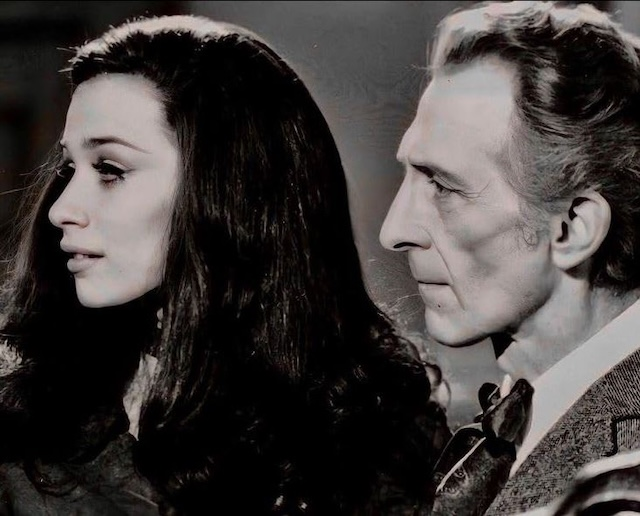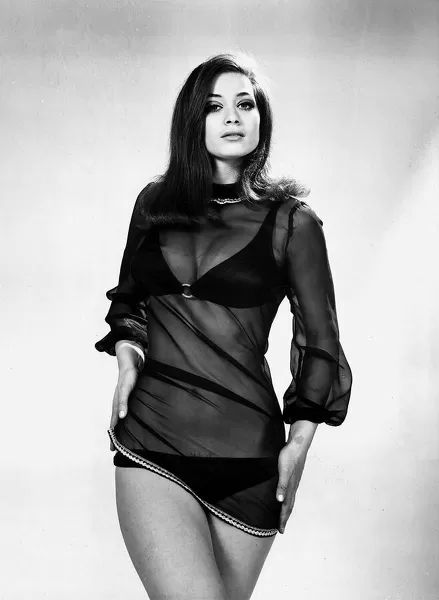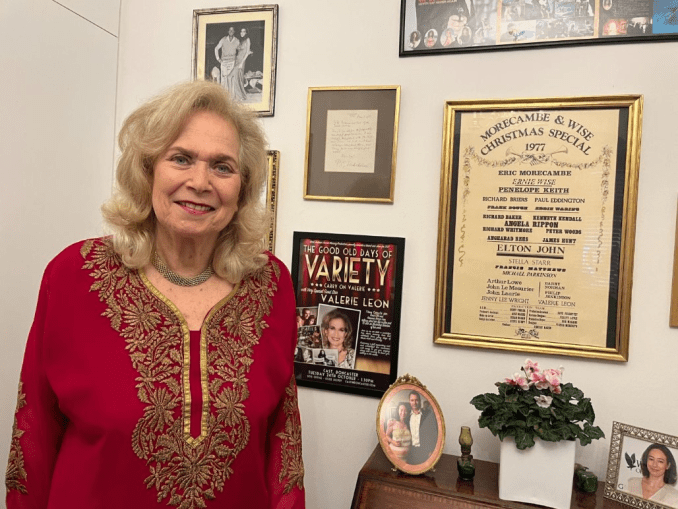Valerie Leon’s acting career is filled with memorable roles, but none are as captivating or infamous as her dual performance in Blood from the Mummy’s Tomb (1971). This Hammer Horror classic combined mystery, tragedy, and an eerie production history that transformed it into a cult phenomenon. Leon’s portrayal of Queen Tera and her modern counterpart cemented her status as a genre icon, while the film’s turbulent creation became a story nearly as haunting as the one it told.
A Haunting Adaptation of Bram Stoker’s Vision

Blood from the Mummy’s Tomb was Hammer Horror’s bold retelling of the mummy tale, inspired by Bram Stoker’s novel The Jewel of Seven Stars. The film explored the resurrection of Queen Tera, an Egyptian ruler whose spirit takes over a modern woman. Valerie Leon’s hypnotic presence added an air of menace and elegance to the film, making her dual role unforgettable.
However, behind the scenes, the production was plagued by misfortunes that would earn the film a reputation as being “cursed.”
Valerie Leon’s Dual Performance
Valerie Leon delivered an extraordinary performance, embodying both the regal and seductive Queen Tera and her modern counterpart, Margaret Fuchs. The role required Leon to seamlessly transition between the menacing queen and the innocent woman whose life is overtaken by Tera’s dark influence. Her striking appearance, combined with her ability to convey power and vulnerability, made her the perfect choice for this dual role.
This performance showcased her versatility and left an indelible mark on the genre, even as the production’s troubles threatened to overshadow her efforts.
The Curse of Blood from the Mummy’s Tomb
The legend of the “curse” surrounding the film remains one of its most compelling stories. A series of tragedies struck during its making, lending an almost supernatural element to its troubled production.
Peter Cushing’s Abrupt Departure
The first major setback occurred when Peter Cushing, cast as Margaret’s archaeologist father, left the production just days into filming. His wife, Helen, had fallen gravely ill, prompting him to step away to care for her. Andrew Keir was quickly cast as his replacement, but the sudden change disrupted the production’s rhythm.
A String of Unfortunate Events
The challenges didn’t stop there. A crew member tragically died in a motorcycle accident, mirroring some of the dark themes of the story. This incident added to the growing sense of unease on set, as cast and crew members felt the weight of the misfortunes surrounding the film.
The Death of Director Seth Holt
The most devastating blow came when director Seth Holt died unexpectedly of a heart attack during production. His death shocked everyone involved, and Valerie Leon later described the experience as deeply unsettling. Producer Michael Carreras stepped in to complete the project, but the loss of Holt left a mark on the film’s tone and execution.
A Cult Classic Despite the Odds

When Blood from the Mummy’s Tomb was finally released, it received a lukewarm reception. Audiences and critics alike were divided on its fragmented tone and uneven pacing. Yet, over time, the film gained a loyal following, earning its place as a cult classic.
The mystique surrounding its troubled production only added to its allure, while fans and critics came to appreciate Valerie Leon’s commanding performance. Her dual portrayal of Queen Tera and Margaret remains the film’s standout element, often cited as one of Hammer Horror’s most memorable roles.
Valerie Leon’s Career Beyond Hammer Horror

While her work in Blood from the Mummy’s Tomb is iconic, Valerie Leon’s career includes many other notable achievements.
From Model to Starlet
Before her Hammer Horror debut, Leon’s career began as a model, where her beauty and charisma caught the attention of filmmakers. This led to a series of roles in British cinema, where she quickly gained recognition for her presence and talent.
A Bond Girl and Comedy Favorite
Leon’s career highlights include her appearances in James Bond films The Spy Who Loved Me (1977) and Never Say Never Again (1983), where she starred alongside Roger Moore and Sean Connery. She also became a fan favorite in the Carry On comedy films, showcasing her ability to bring humor and charm to the screen.
Television Stardom
In addition to her film work, Leon became a familiar face on British television, appearing in various dramas and comedies. Her versatility as an actress allowed her to transition effortlessly between genres, securing her a lasting legacy in the entertainment industry.
A Lasting Legacy in Hammer Horror History

Blood from the Mummy’s Tomb stands as a testament to Valerie Leon’s talent and resilience. Despite the film’s turbulent production and initial reception, her dual performance continues to captivate audiences.
The film has become a beloved piece of Hammer Horror’s golden era, cherished for its atmospheric storytelling, chilling themes, and Leon’s unforgettable portrayal. It’s a reminder of the magic that can emerge from even the most chaotic circumstances in filmmaking.
Conclusion
Valerie Leon’s role in Blood from the Mummy’s Tomb is a defining moment in her career and in Hammer Horror’s legacy. Her ability to bring both power and vulnerability to her dual performance remains unmatched, ensuring her place as an icon of the genre.
While the film is remembered for its behind-the-scenes tragedies, it has endured as a cult classic, celebrated for its eerie charm and Leon’s magnetic presence. Decades later, her work continues to inspire and entertain, cementing Valerie Leon’s status as a timeless figure in British cinema.


